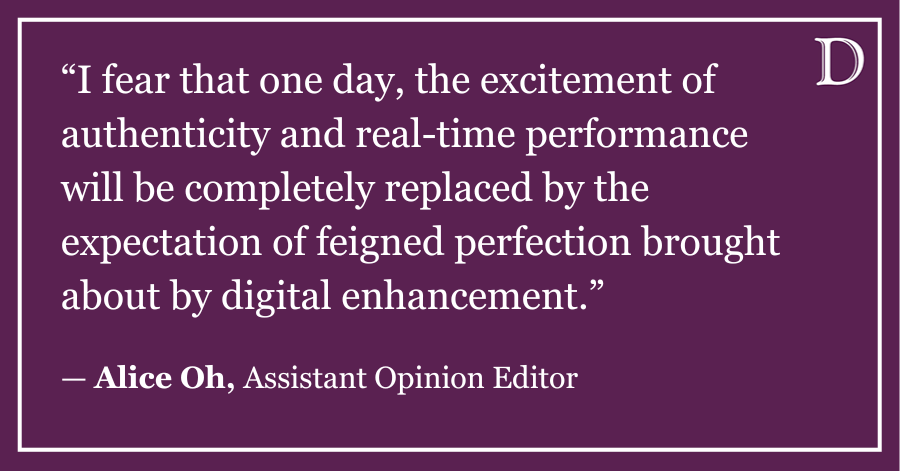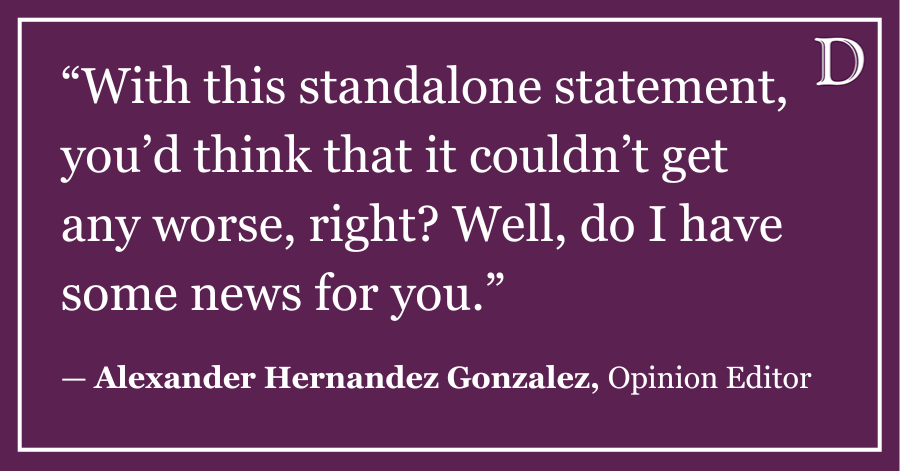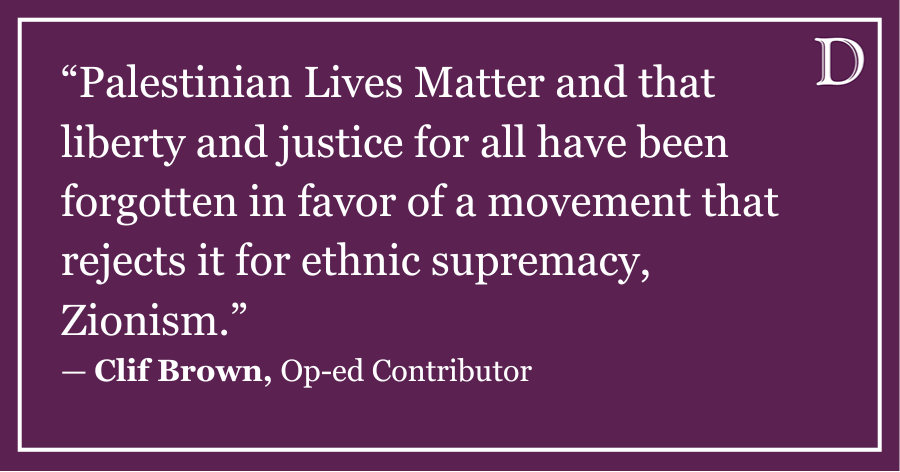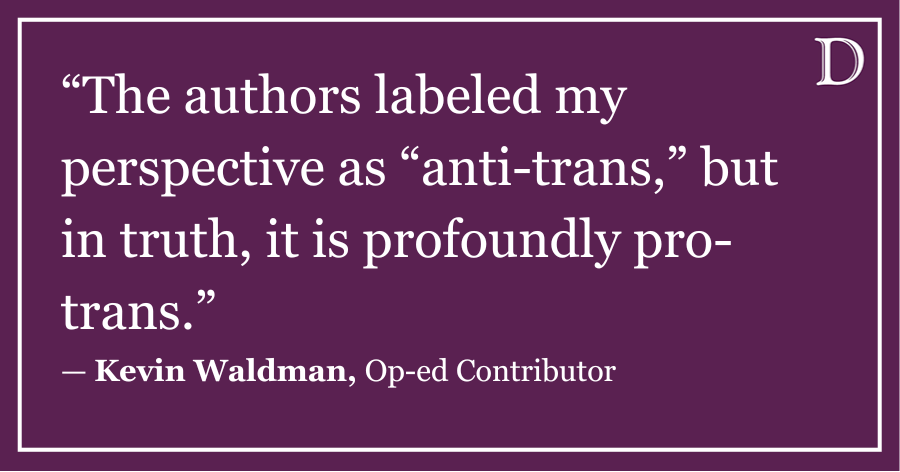
One year ago tonight, my stepfather stood on our neighbor’s deck, watching as the ocean slowly devoured our home.
Like a hundred of Miley Cyrus’s wrecking balls, an 8-foot swell had already smashed through the sand dunes. It spilled into the streets and joined with the bay, which had disposed of the seawall some hours earlier. My stepdad was in our basement, trying to salvage the last few prized possessions remaining when the water barged in uninvited, knocking him clean across the room into our washing machine. Within seconds, the Atlantic filled our basement from floor to ceiling, nearly drowning my stepdad in his own home.
He soon joined dozens of brave and foolhardy residents across Long Beach. Having decided to wait out the storm, they now flocked to their second floors and stared into the darkness, wondering if the ocean would ever end its assault. Cars, front porches, hot tubs and whatever else the ocean decided to take along for a ride floated by ominously.
Eventually the ocean did recede, leaving behind a battered and confused barrier island. We live a mere 26 miles from Manhattan. This was never supposed to happen to us. Growing up in a coastal town, respect for the power of the sea had been burned into our ethos. But never in a million years could we have begun to fathom the power of Poseidon’s wrath.
We like to joke that overnight God answered our long-lost prayers and granted us true beachfront property. He also graced us with our 15 minutes of fame as our street was featured on the front page of the Sunday edition of The New York Times amid piles of sand, debris and a van with the phrase, “you loot, we shoot” inscribed on it.
This morning the photo resurfaced in The New York Times, alongside the stories of many New York and New Jersey residents affected by the storm. Included in this feature is a story on the Long Beach Tidal Waves, a ragtag travel baseball team assembled of whatever hood-rat kids were left in Long Beach after the storm. Narrating the team’s story is its star first-baseman and my half-brother, Aidan White.
Two months after Sandy, on Christmas Eve, we blew up some air mattresses, picked up a Charlie Brown tree and celebrated Christmas morning in the skeleton of our old house. If the Grinch and the American Civil Liberties Union couldn’t stop Christmas, neither could Sandy.
One year later, we’ve picked up the pieces and are finally beginning to rebuild. Our house, affectionately nicknamed “the cabin,” is a cozy little place. It’s got rustic plywood floors, half sheet-rocked walls, and three beach chairs with blankets for a couch. What our FEMA kitchen lacks in cooking appliances, it makes up for in beautiful adherence to minimalist architecture. Exposed electrical wires provide the final accessorized touch.
Crazy as it may sound, I fell in love with our “new” home this summer and will shed a sentimental tear when we have to knock it down and rebuild a new place eight feet off the ground to meet FEMA regulations. Like many of our neighbors, we have no idea where the money will come from. But we are far more fortunate than most.
So as the one-year anniversary of Superstorm Sandy passes with the high tide, I ask you to spare a thought and say a prayer for the 117 people who lost their lives and those who saw their livelihoods wash away on that October night. Though there are heartwarming signs of recovery abounding, there are still thousands of good, hard-working people who don’t know when or even if they will ever return home. Entire towns on the Jersey Shore, epitomizing an East Coast summer, are shells of their former selves. Iconic communities in Queens, such as Breezy Point and Rockaway Beach, may never be the same
As for my little town, something magical happened this summer: normalcy. City dwellers flocked onto commuter trains by the thousands to trade the sweltering grotto of Manhattan for our little summer utopia. Lifeguards’ whistles blared, surfers surfed, striped bass were reeled in off the jetties and tourists annoyed us with their blatant disregard for beach etiquette. Taco Tuesdays at The Cabana were so full that it was often difficult to flag the bartender down for a third margarita.
With the last weekend warriors having long since departed, we settle in for our season of reclaiming the sand, hell-bent on doing whatever we can to rebuild in time for next summer.
Though we wait for FEMA checks and insurance payments we fear may never come, the greatest evidence of our resolve exists at Shine’s, the neighborhood watering hole. It’s an old-school Irish pub — less a bar than a living room for the old guard of our community. When the power for the entire region was out, Shine’s remained open, because, as owner Brent Wilson told The Wall Street Journal, “Guinness serves well at room temperature.” Like the rest of our town, Shine’s sat hauntingly empty for months before the locals started slowly filing back to reclaim their bar stools. They’re back now and have taken their places near the sign by the window that reads “bruised but not broken.”
Finally, one year after Sandy washed everything away, the bruises are beginning to heal. There’s still an island left for islanders like me.
Mike Mallazzo is a Medill senior. He can be reached at michaelmallazzo2014@u.northwestern.edu. If you would like to respond publicly to this column, send a Letter to the Editor to opinion@dailynorthwestern.com.












